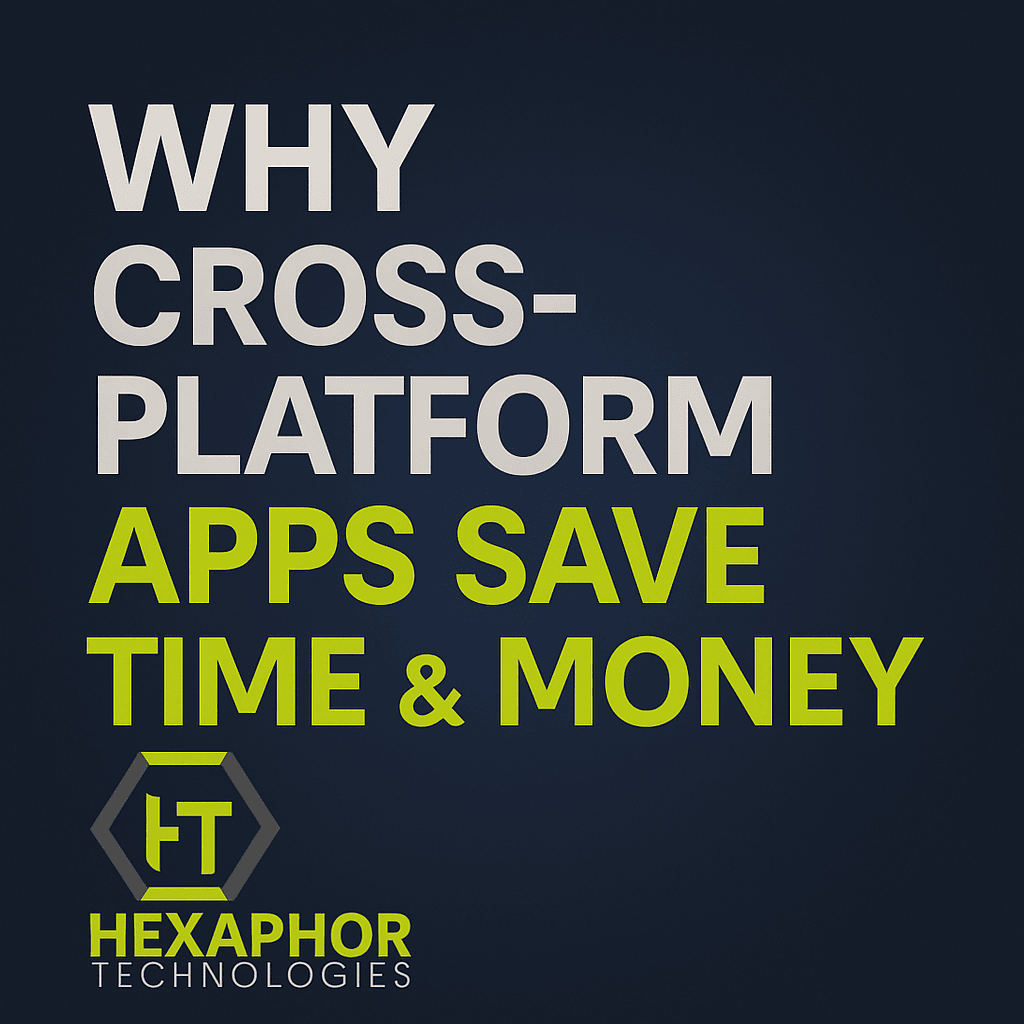
In the ever-evolving mobile-first world, businesses are constantly looking for ways to launch apps faster, cut down costs, and maximize user reach. This is where cross-platform app development emerges as a strategic winner.
Unlike native app development, which requires separate codebases for iOS and Android, cross-platform apps enable developers to write once and deploy everywhere—resulting in reduced development efforts and significant cost savings.
Cross-platform development refers to creating mobile applications that run seamlessly on multiple operating systems (typically iOS and Android) using a single codebase.
Popular frameworks include:
Flutter (by Google)
React Native (by Meta)
Xamarin (by Microsoft)
Ionic
Let’s dive deep into why cross-platform development is a game-changer for startups, SMEs, and enterprises.
| Feature | Native Apps | Cross-Platform Apps |
|---|---|---|
| Codebase | Separate for iOS/Android | One shared codebase |
| Development Time | Longer | Shorter |
| Cost | Higher | Lower |
| Performance | Best | Near-native |
| Maintenance | Complex | Easier |
Cross-platform frameworks allow developers to build and deploy apps faster.
✅ Shared codebase = faster development
✅ Simultaneous iOS & Android deployment
✅ Ideal for MVPs and startups
Instead of hiring two separate teams for iOS and Android, a business can work with a single cross-platform team.
✅ Lower labor cost
✅ Fewer development hours
✅ Budget-friendly scalability
Write once, use multiple times.
More than 70–90% of code can be reused between platforms, resulting in:
✅ Reduced bugs
✅ Streamlined testing
✅ Easier debugging
Publishing apps simultaneously on Google Play Store and Apple App Store gives you instant access to billions of users.
✅ No platform left behind
✅ Consistent brand experience
Managing one codebase means faster updates, patches, and enhancements across all platforms.
✅ Lower maintenance effort
✅ Quick bug fixes
✅ Simultaneous feature rollouts
Frameworks like Flutter and React Native now offer smooth UI, fast load times, and access to native device features (camera, GPS, etc.).
✅ Excellent user experience
✅ High-speed performance for most apps
Cross-platform ecosystems offer a large pool of plugins for:
Payment integration
Push notifications
Maps & location
Social logins
✅ Faster development
✅ Access to native functionalities
With only one codebase, QA teams test once—saving time and ensuring quicker releases.
✅ Fewer test cases
✅ Faster bug detection
✅ Better resource utilization
Cross-platform frameworks offer components that mimic native UI behavior, ensuring a consistent design across all devices.
✅ Cohesive brand identity
✅ User-friendly experience
Choose cross-platform when:
You have a limited budget
You want to launch quickly
Your app does not require heavy device-level processing (like AR/VR or 3D games)
You aim to reach a wide audience across platforms
Hexaphor Technologies developed a cross-platform app for a local delivery startup. With one codebase:
The client launched on iOS and Android in less than 3 weeks
Saved over 40% on development costs
Achieved consistent UI/UX across all devices
👉 For most business and utility apps, yes. High-end games or hardware-intensive apps may benefit more from native.
👉 Yes, migration is possible. We recommend phased rewrites with careful planning.
👉 Modern frameworks support native module integration, allowing access to device-level APIs.
Cross-platform development offers the perfect balance of speed, efficiency, and reach. Businesses that adopt this model enjoy lower costs, faster launches, and a competitive edge in the mobile-first marketplace.
At Hexaphor Technologies, we specialize in custom cross-platform app development using modern frameworks that deliver value and performance.
📞 Looking to build a powerful app on a budget? Let’s discuss your idea today.